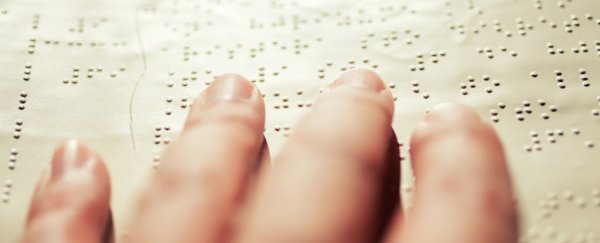While our grey matter is divided up into a number of separate cortical areas devoted to processing distinct senses – such as sight, sound, and touch – a new study suggests that the divisions between these areas are in fact quite fluid, provided we take the time to re-tune our brains.
Researchers at Jagiellonian University in Poland say that complex learning tasks give us the ability to conduct large-scale reorganisations in our cerebral cortex, overwriting the ways our brain normally deals with sensory information.
While there's already an example of this kind of rewiring in cases involving injuries or sensory deprivations – such as people relying more heavily on certain senses after a stroke, or adapting to becoming blind – the scientists say it's something any of us can do if we apply ourselves.
"The textbooks tell us that the visual cortex processes visual tasks while the tactile cortex, called the somatosensory cortex, processes tasks related to touch," said cognitive scientist Marcin Szwed. "Our findings tear up that view, showing we can establish new connections if we undertake a complex enough task and are given long enough to learn it."
To test their hypothesis, the researchers recruited 29 volunteers who were taught to read Braille while blindfolded, over the course of nine months. During the experiment, the participants achieved reading speeds of up to 17 words per minute.
That in itself might not be so remarkable, but before and after the course, the group was scanned by Functional Magnetic Resonance Imaging (fMRI) to see what changes in their brains occurred as a result of their months of blindfolded effort.
The findings, reported in eLife, show that following the trial, areas of the visual cortex in the participants' brains – particularly the Visual Word Form Area – had been activated, along with evidence of connections to the tactile cortex having been established.
While this result might not have been unexpected – after all, the visual cortex in blind people is known to adapt when it becomes deprived of its native input – there had been no conclusive evidence of the same phenomenon occurring in healthy adults. In other words, anybody can reprogram how their brain processes their senses – if they want it badly enough.
"For the first time we're able to show that large-scale reorganisation is a viable mechanism that the sighted, adult brain is able to recruit when it is sufficiently challenged," said Szwed. "We are all capable of retuning our brains if we're prepared to put the work in."
When the team used transcranial magnetic stimulation to suppress the Visual Word Form Area in the brains of some of the volunteers, their ability to read Braille was impaired, providing further evidence that their visual cortex had been rewired for non-visual, tactile purposes.
"The extra flexibility that we have uncovered might be one those features that made us human, and allowed us to create a sophisticated culture, with pianos and Braille alphabet," said Szwed.
It's worth bearing in mind that the sample size used in the study isn't large, and further research will be needed to confirm the results, so we can't get too excited just yet. But nonetheless, according to the researchers, the findings suggest that we might need to rethink our perspective on set boundaries within the human brain – as the results demonstrated here could mean that things are a lot more flexible than conventional theory puts it.
"Despite evidence for cross-modal plasticity of the human brain, the dominant view still describes it as necessarily constrained by the sensory boundaries," the authors write. "Our study provides … clear-cut evidence that learning-related neuroplasticity can overcome the sensory division. This calls for a re-assessment of our view of the functional organisation of the brain."
